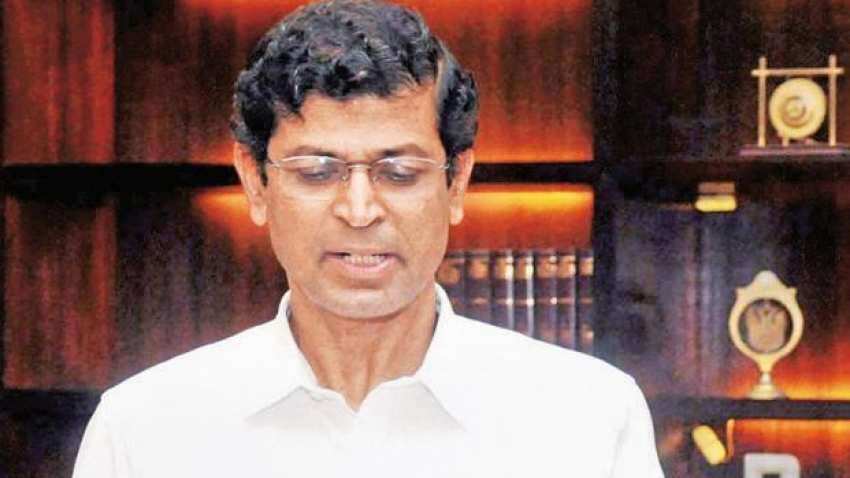Insolvency law a 'Swachhata drive' against non-performing assets: IBBI chief
The "evolving" insolvency law is a kind of "Swachhata drive" to clean up non-performing assets as well as put companies in the hands of capable and credible people, according to IBBI chief M S Sahoo

New Delhi, Mar 22 (PTI) The "evolving" insolvency law is a kind of "Swachhata drive" to clean up non-performing assets as well as put companies in the hands of capable and credible people, according to IBBI chief M S Sahoo.
Around 3,600 companies have been admitted under the Insolvency and Bankruptcy Code (IBC) so far.
While acknowledging that the Code is still evolving, Sahoo said authorities are conscious of the emerging needs.
"As and when they find a problem, they try to address it as expeditiously as possible. The insolvency professionals, creditors, NCLT, IBBI -- all are on a steep learning curve. The Supreme Court has been settling matters at a quick pace. I believe the road to success is always under construction," he told PTI in a recent interview.
Sahoo is the chairperson of the Insolvency and the Bankruptcy Board of India (IBBI), a key authority in implementing the Code. A case is taken up under the Code only after approval from the National Company Law Tribunal (NCLT).
When asked about the enduring benefits of the Code, which came into force in 2016, the IBBI chairperson said, "This is another kind of Swachhata (cleanliness) drive to clean up NPAs (non-performing assets) and to put companies in the hands of capable and credible people".
"This reinforces the rule of law by treating every company on the same level-playing field, irrespective of its size or the influence of the people behind them. Repayment of loan is no more an option, but an obligation," he noted.
With the IBC in place, as the Supreme Court puts it, the defaulter's paradise is lost, Sahoo emphasised.
The Code provides for a time-bound and market-linked resolution of stressed assets. If the resolution does not happen, the company concerned goes into liquidation.
"Failing is succeeding in Silicon Valley. An entrepreneur should not be stuck up in a business if he is failing to deliver," Sahoo said.
On whether the success of IBC is not just in numbers, the IBBI chief said that given the behavioural change, the performance should be seen in totality.
It should be seen in terms of "what happens under the IBC, what happens on account of the IBC and what happens in the shadow of the IBC," he said.
"190 companies were rescued, while 780 companies were referred for liquidation. Thus, the number of companies getting into liquidation is four times that of companies being rescued. These 190 companies, however, had assets, which is four times of the assets of the 780 companies.
See Zee Business Live TV Streaming Below:
"Thus, asset rescued is four times compared to those referred to liquidation. Importantly, of the companies rescued, one-third were under BIFR or defunct. Of the companies that proceeded for liquidation, three-fourths were under BIFR (Board for Industrial and Financial Reconstruction) or defunct," he said.
Get Latest Business News, Stock Market Updates and Videos; Check your tax outgo through Income Tax Calculator and save money through our Personal Finance coverage. Check Business Breaking News Live on Zee Business Twitter and Facebook. Subscribe on YouTube.
RECOMMENDED STORIES

IPL Auction 2025 Free Live Streaming: When and where to watch Indian Premier League 2025 mega auction live online, on TV, Mobile Apps, and Laptop?

SIP vs PPF: How much corpus you can build in 15 years by investing Rs 1.5 lakh per year? Understand through calculations

SBI Senior Citizen Latest FD Rates: What senior citizens can get on Rs 7 lakh, Rs 14 lakh, and Rs 21 lakh investments in Amrit Vrishti, 1-, 3-, and 5-year fixed deposits
08:02 AM IST








 Opportunity to buy affordable homes from government Banks: All auction details now on new platform e-Bikray
Opportunity to buy affordable homes from government Banks: All auction details now on new platform e-Bikray Year Ender 2021: With missed timelines, insolvency cases likely to speed up with improved infrastructure
Year Ender 2021: With missed timelines, insolvency cases likely to speed up with improved infrastructure IBBI amends regulations; seeks to enhance discipline, transparency in insolvency process
IBBI amends regulations; seeks to enhance discipline, transparency in insolvency process NCLT suggests IBBI review insolvency code regulations
NCLT suggests IBBI review insolvency code regulations SBI inks pact with NeSL, announces credit cards for farmers
SBI inks pact with NeSL, announces credit cards for farmers